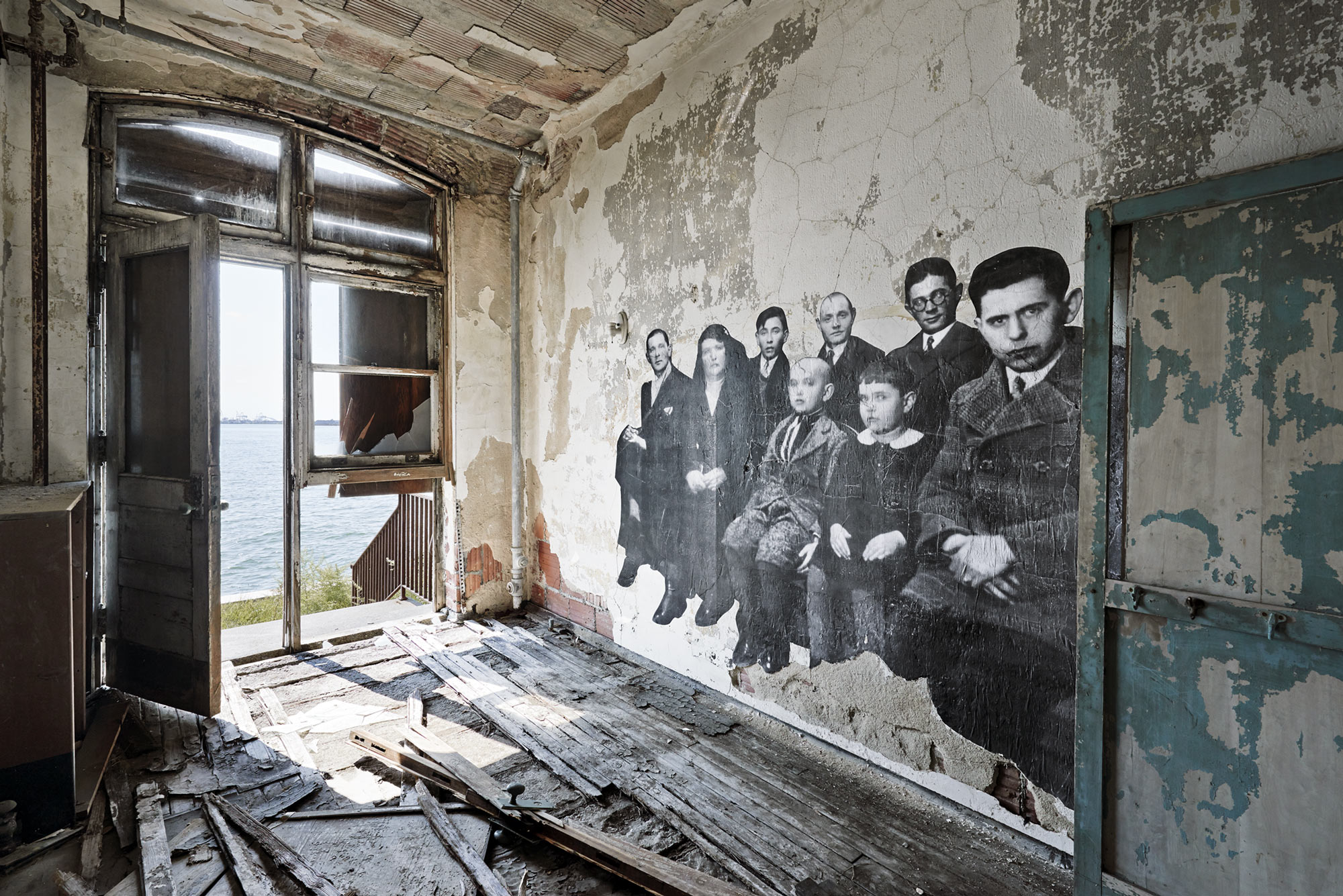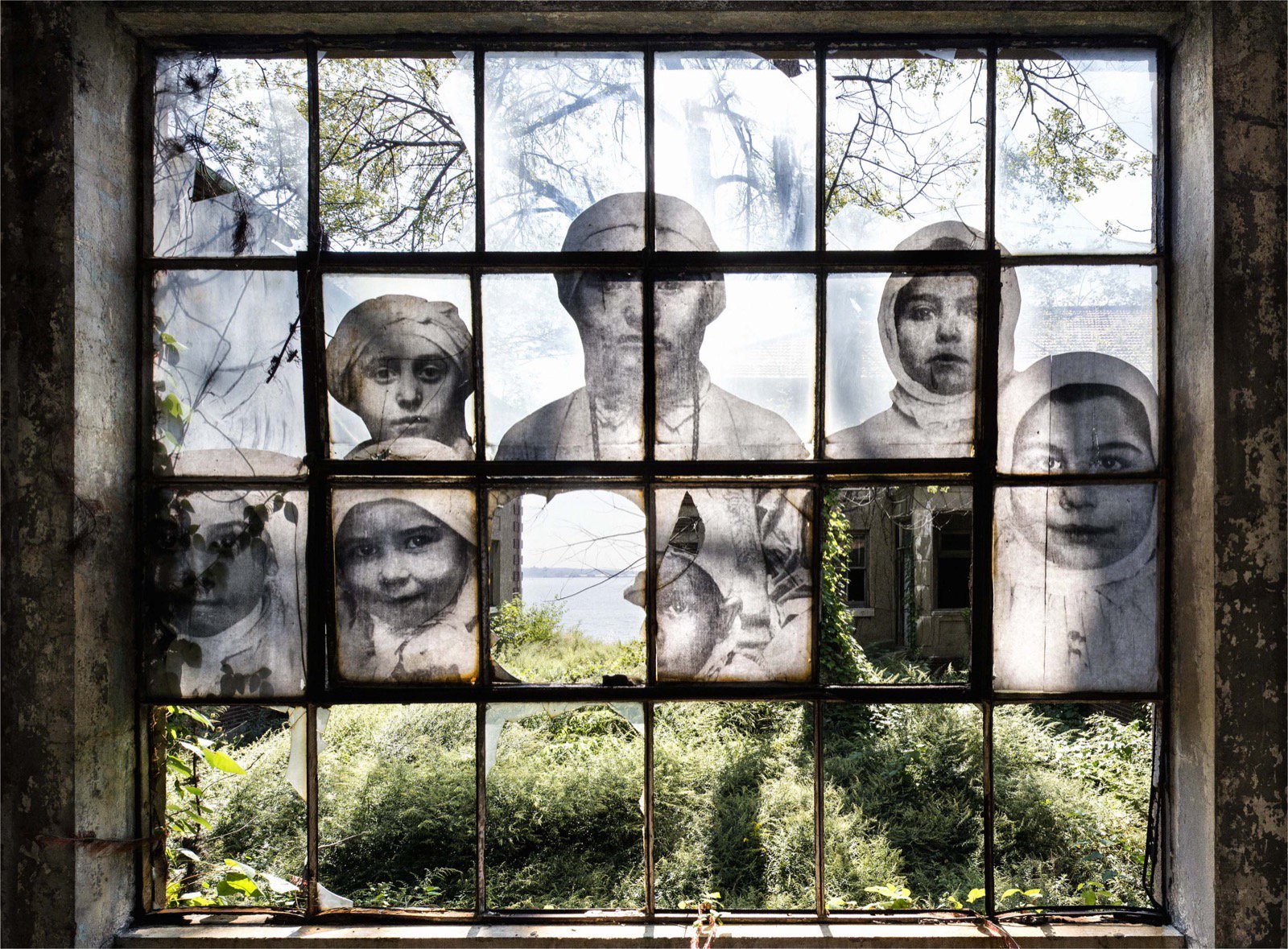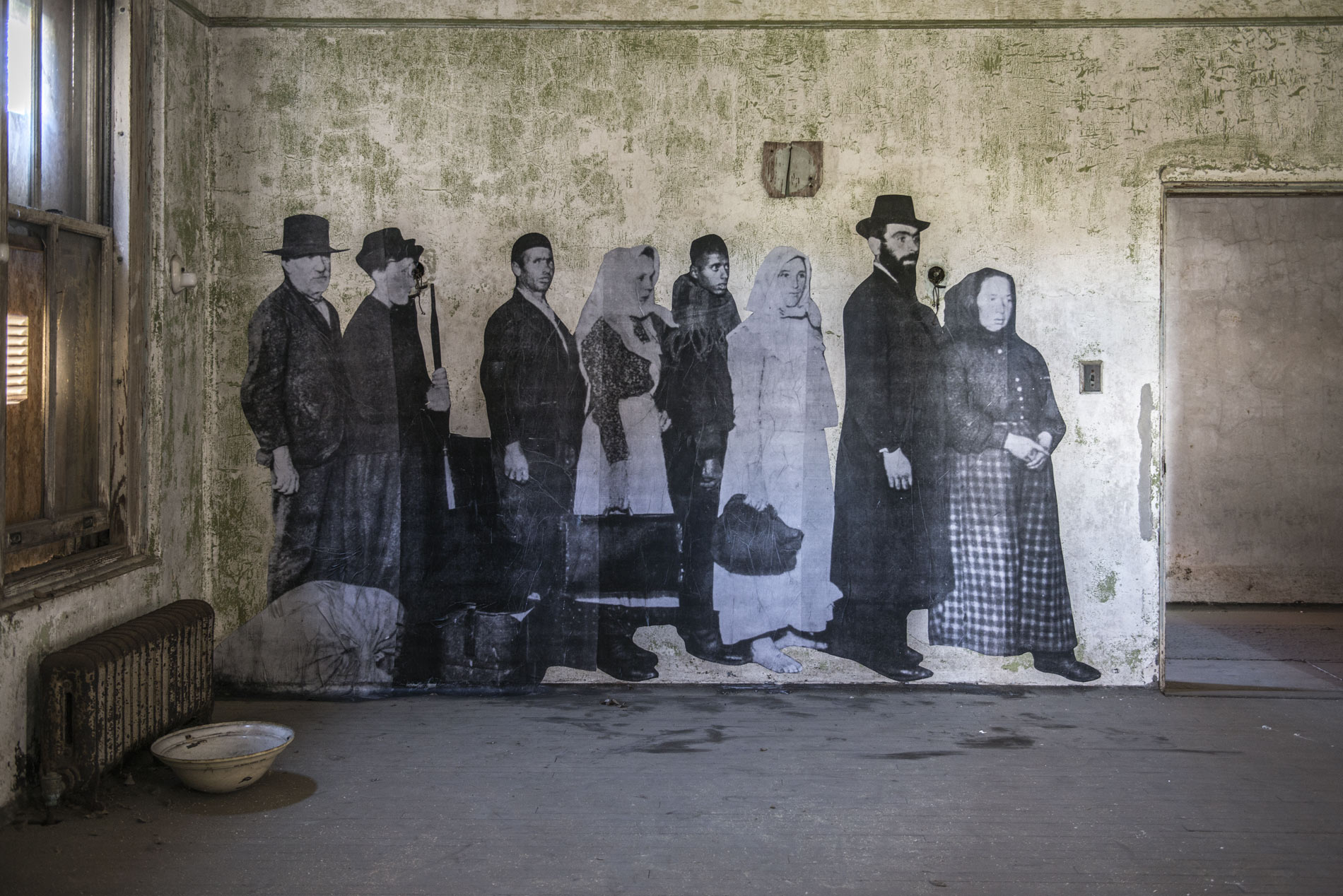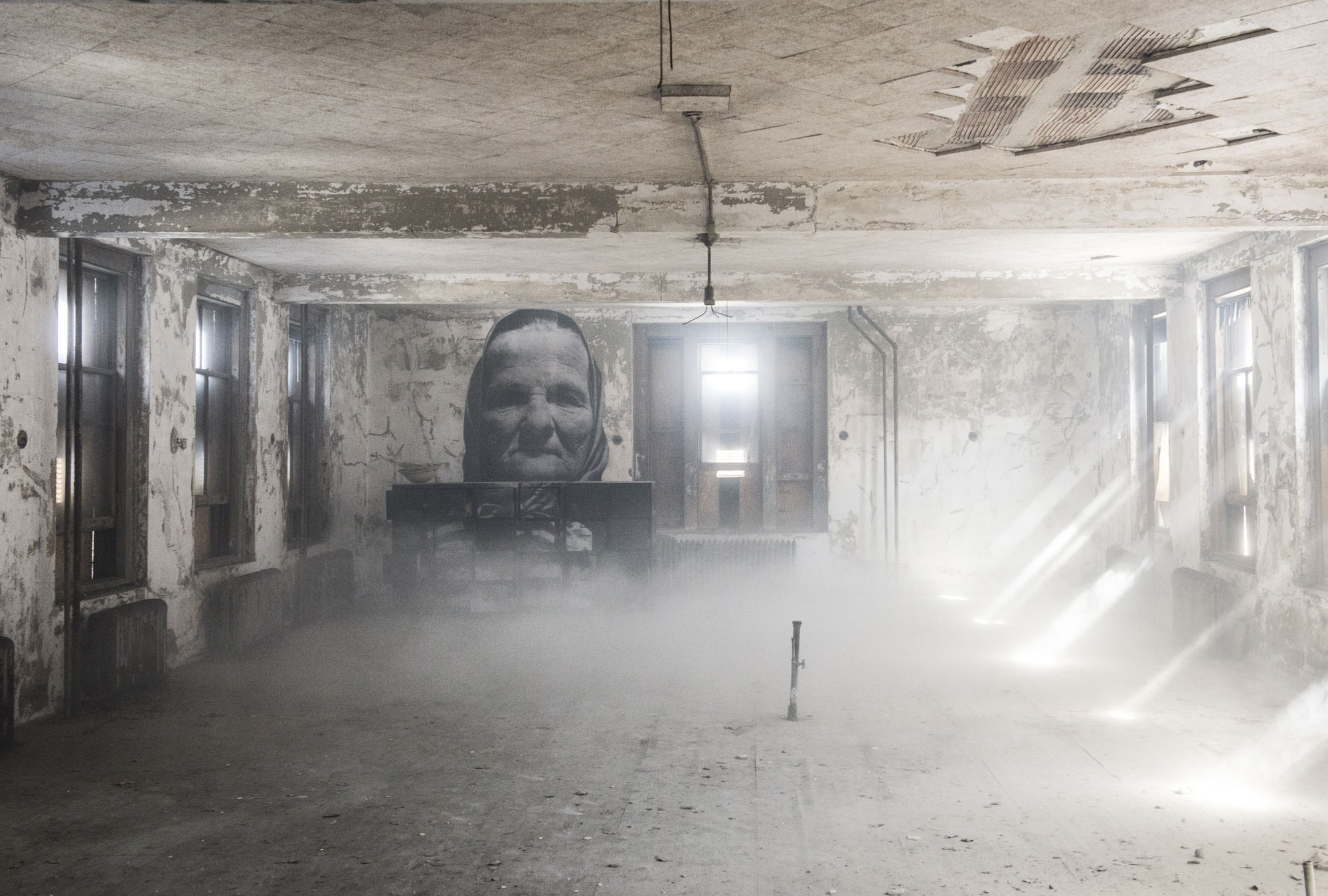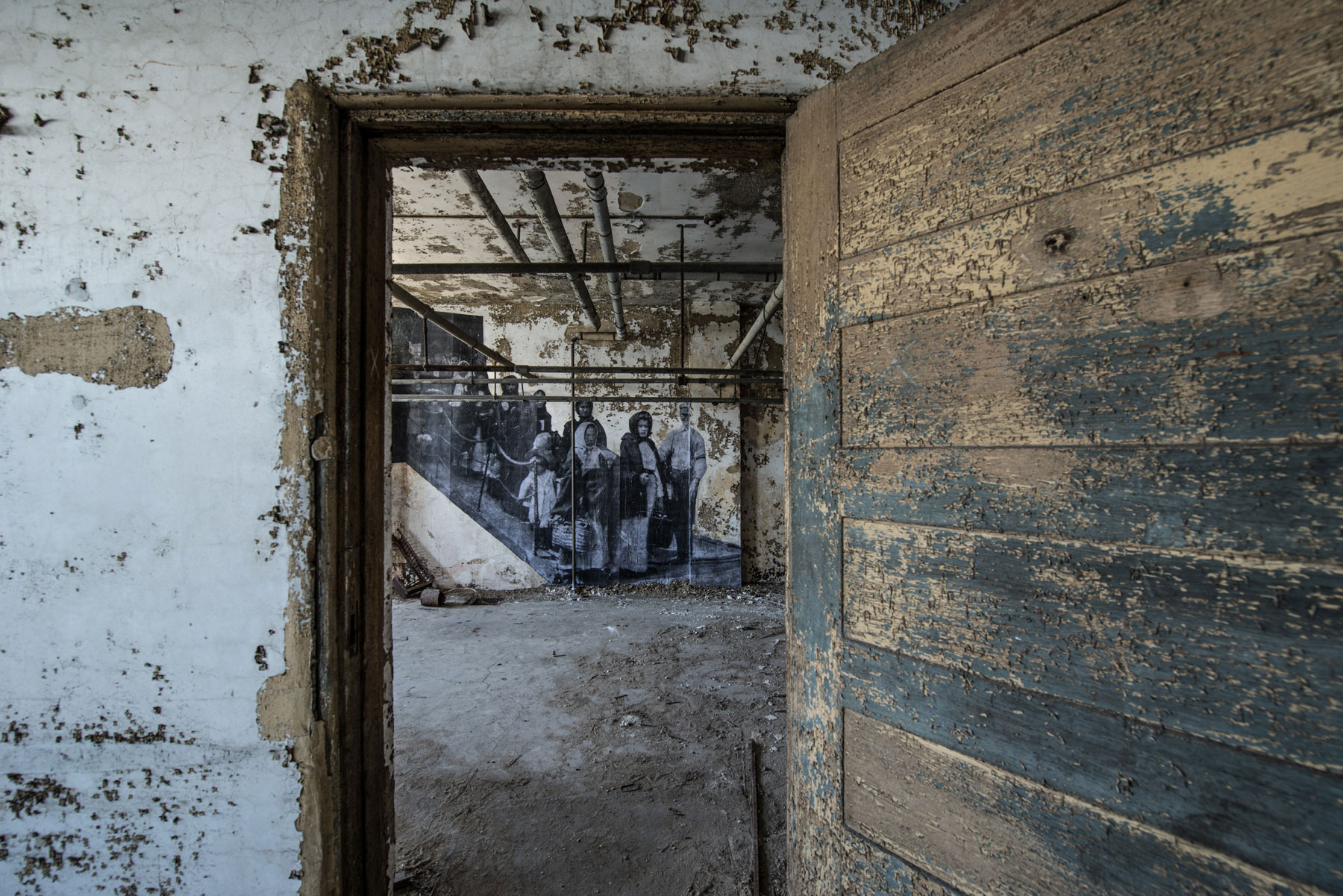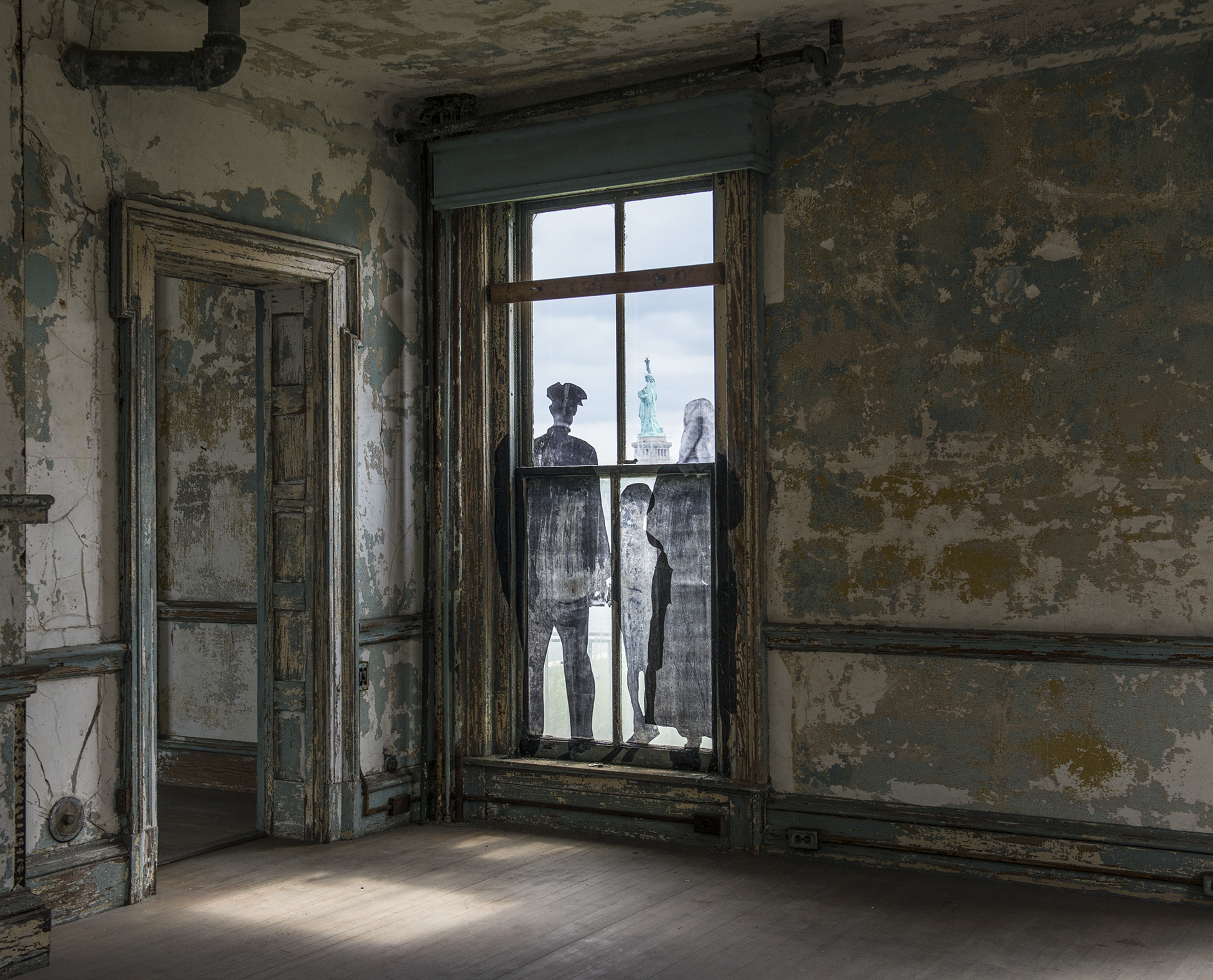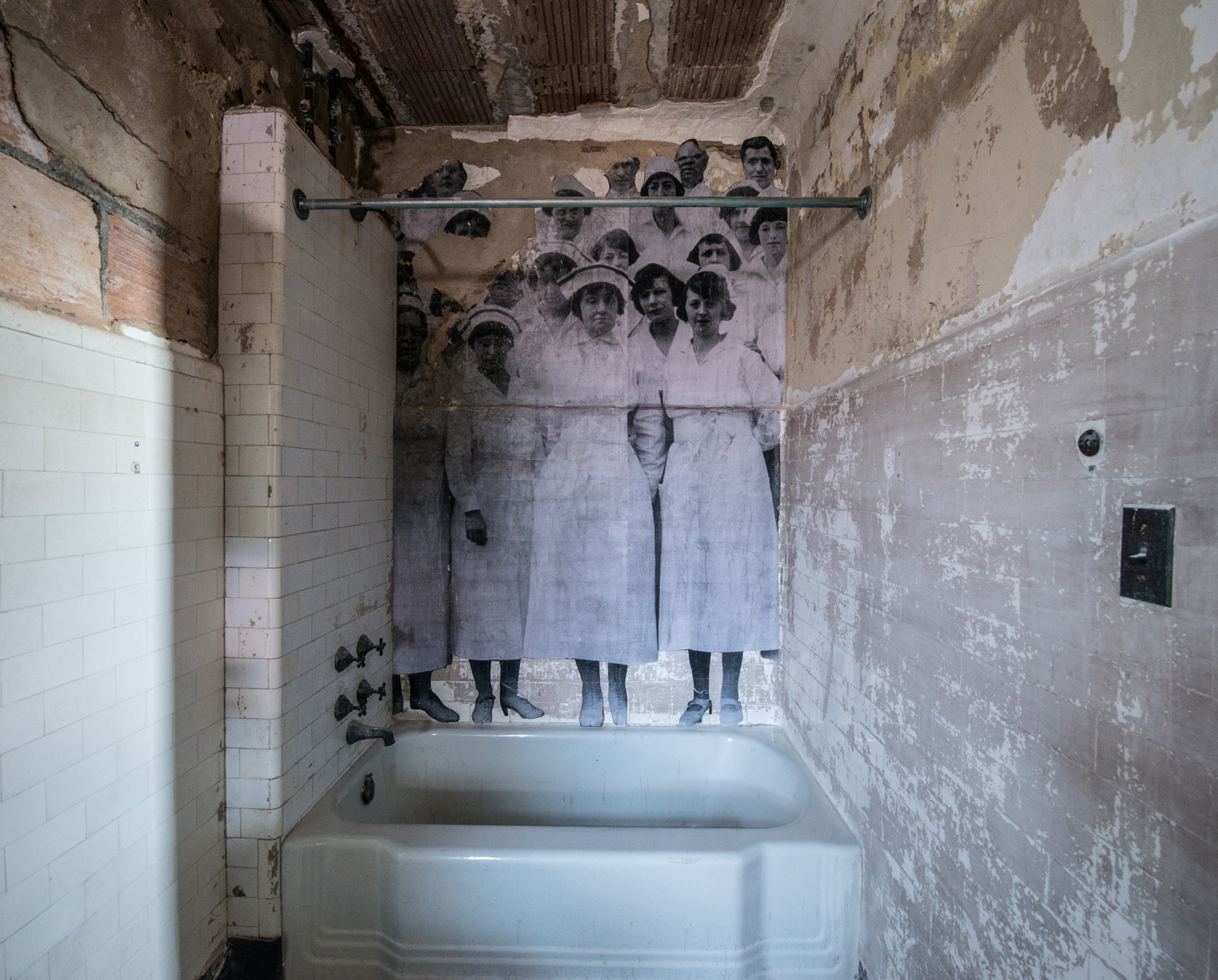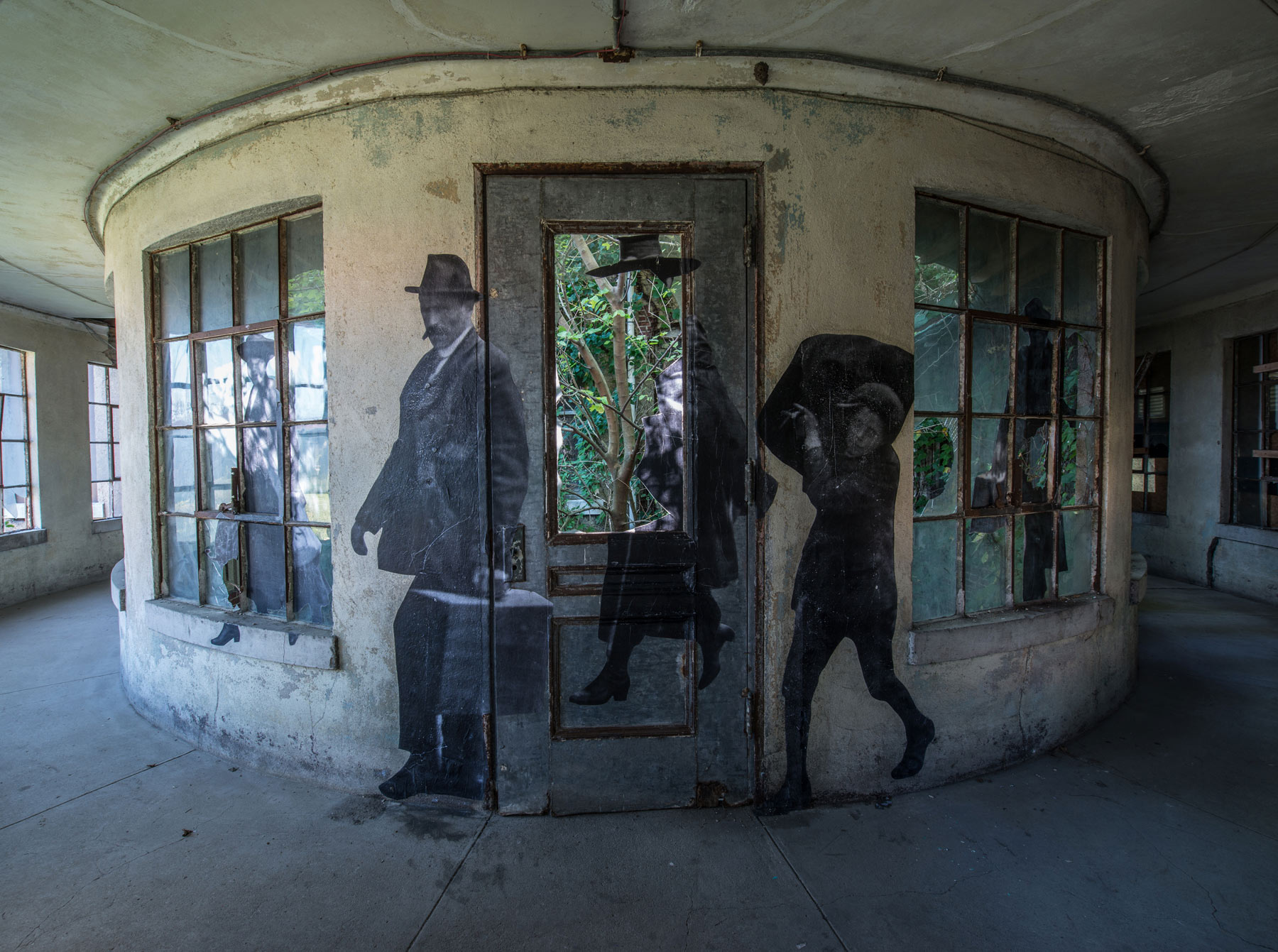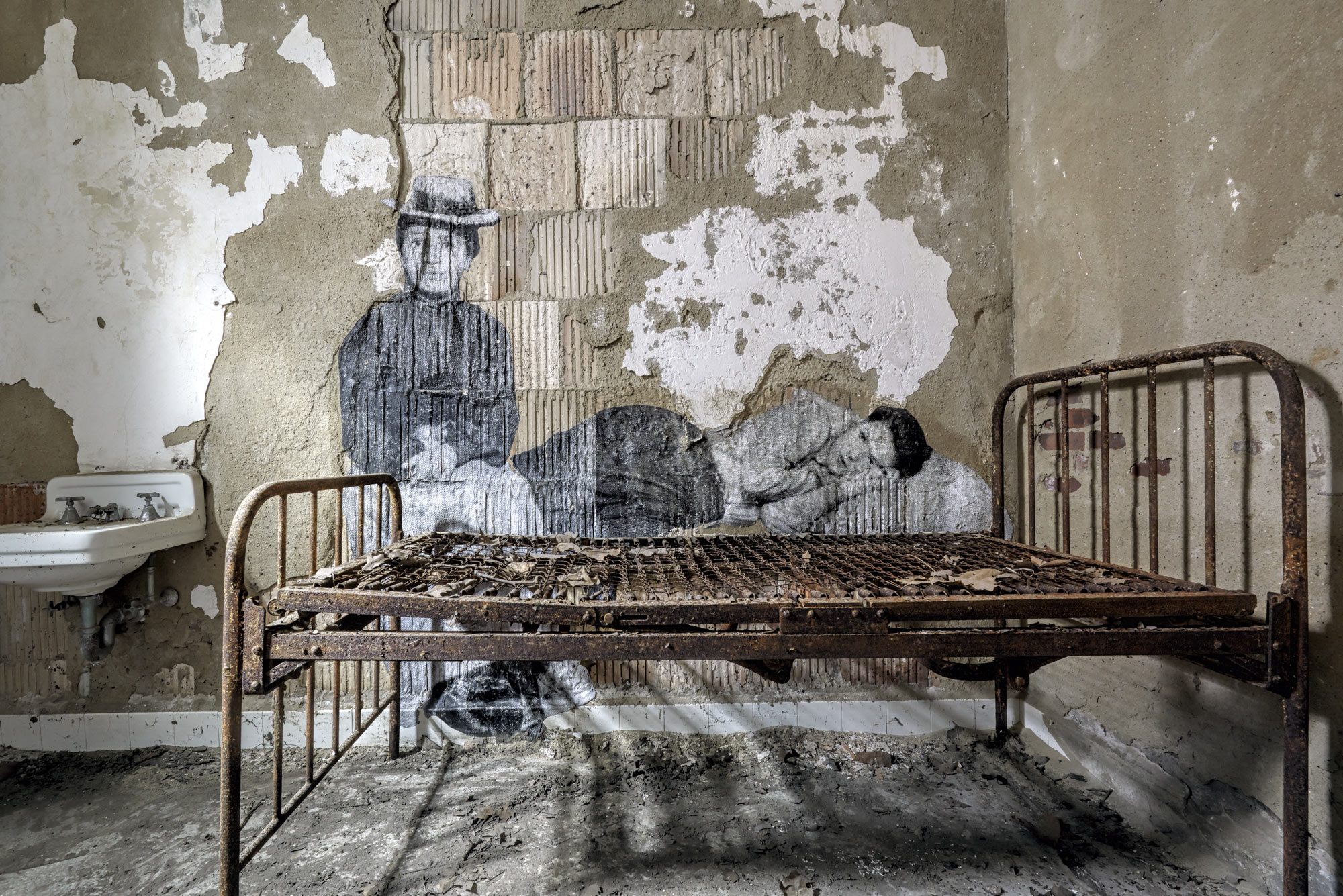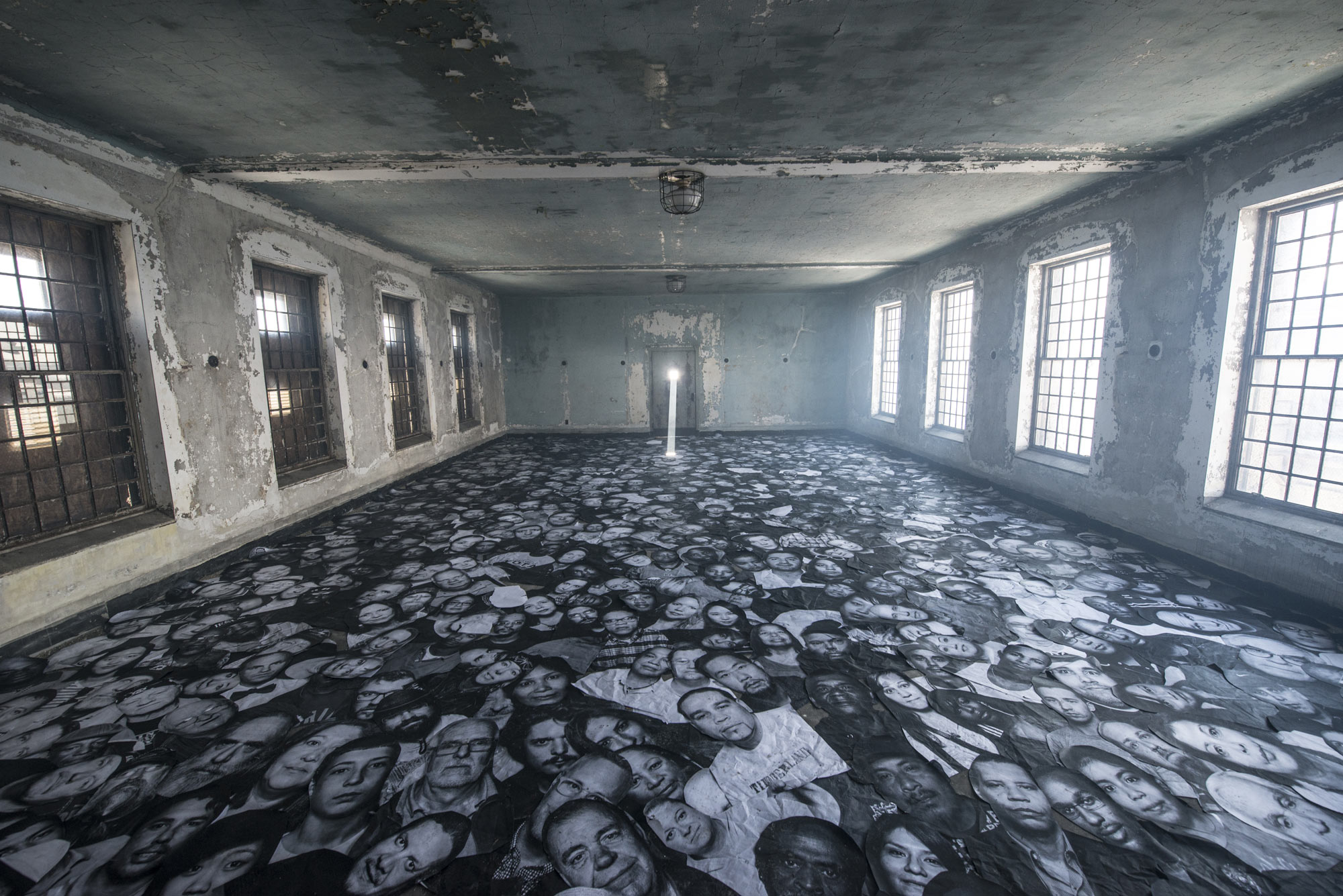When artist JR started a project about the 1.2 million people held in limbo at the Ellis Island Immigrant Hospital in the early 20th century, he couldn’t help but notice ghosts of the present.
They stand in line, hands clasped in front of them or gripping the suitcases that contain their possessions. The women wear headscarves, the men thick coats, the children the travel-weary expressions of those who have come a very long way.
The photos could be of the refugees currently camped out between Greece and the Balkans, or of the 2,000 migrants living in temporary accommodations at Berlin’s Tempelhof Airport. But they aren’t. These are archival images of people at the Ellis Island Immigrant Hospital — its own special sort of limbo, where many were held or turned away from the opportunity of a new life. In the short film Ellis, TED Prize winner JR highlights the stories of the individuals who populated this hospital. Here’s a poignant look at images from the film and the art installation that inspired it.
Welcome to America
As immigrants passed through Ellis Island, doctors examined them and held them at the hospital if they were determined to have a communicable disease or to be in need of the “psychopathic ward.” Some 10% of the 12 million immigrants who arrived at Ellis Island between 1892 and 1954 ended up at the hospital — and some 120,000 people were turned away from the United States. While little documentation remains of who these people were, archive photos serve as witness. In 2014, JR pasted two dozen of these images throughout the hospital grounds. “I’m fascinated by the unique stories each person had in moving to America,” he says. “Everyone wants to have a better life and to give their children a better life than theirs. That resonates with people around the world.”
Patients of all ages
The seven children in this image aren’t wearing head coverings for religious reasons. They were treated at the Ellis Island Immigrant Hospital for favus, a scalp infection for which all members of a family should be treated simultaneously. Doctors at the hospital also treated patients for measles, heart disease, scarlet fever, trachoma and a host of other medical issues. At the height of immigration to the US, the Ellis Island Immigrant Hospital occupied multiple buildings and had about 750 beds. About 350 babies were born here, and 3,500 people died here.
The anticipation of immigration
As he conducted research for the Ellis Island installation, JR noticed a likeness between the images he was looking at and his own family’s experience in France. “I myself am a second-generation immigrant, and when I tell the story of Ellis Island, I tell the story of my own family,” he says. Soon, an even more startling parallel emerged. “Suddenly, the biggest crisis that Europe has seen since World War II was exploding. I went to Lampedusa in Sicily and there were thousands of people arriving every day from North Africa or Syria. There, I observed the Ellis Island of today.”
The ongoing story of immigration
Ellis Island was host to a steady stream of immigrants from all parts of Europe. This woman, for instance, was Czech. Today, nearly 60 million people have been displaced by war and persecution. Of them, about 11.6 million have fled Syria, 3.7 million left Afghanistan and 2.5 million are from Sudan. “There were immigrants in Ellis Island a hundred years ago, there are migrants now, and there will be more in 100 years,” says JR. “We have to do what we can to try to relate to each individual story.”
The similarities between then and now
Following the terrorist attacks in Paris in December 2015, debate raged about how to screen refugees for resettlement, or where they should be allowed to go. Many on social media pointed to the fact that the same discussion took place about Jewish refugees on the eve of the Holocaust. Peter A. Shulman surfaced American public opinion polls from this era. In one survey conducted by Gallup in January 1939, only 30% of respondents agreed that Jewish children should be taken into care in American homes.
In the shadow of hope
Immigrants held at the Ellis Island Immigration Hospital found themselves just across the Hudson River from New York City — and could often catch glimpses of the mirage of a new future. JR pasted this image of an immigrant family on a window with the Statue of Liberty in the distance — just as it had been in the archival photo. The film tells the story of a man who fails his health check and goes on the lam at the hospital to avoid being sent back home. “I had only one thing in mind, one place to be,” says narrator Robert De Niro, looking toward Manhattan. “You could fly if you had the wings. You could swim there if the current wasn’t so hard.”
A staff fueled by nurses
The Ellis Island Immigrant hospital had a staff of doctors and surgeons who attended to patients. But the nurses were its true lifeblood. About 300 nurses worked here, living in a residence on the hospital grounds. They had to request a ferry pass to leave.
The curved walls of Ellis Island Immigrant Hospital
While it looks eerie and archaic now, the Ellis Island Immigrant Hospital was actually considered cutting edge at the time. One indicator of that: its curved walls. According to UntappedCities.com, “It was thought at the time that [straight] corners harbored disease, so all the corners are rounded.”
Denied entry
Both of these women were denied entry into the United States. To JR, it’s remarkable that they came so far and tragic that they were sent back. “I meet people all the time who dream of leaving their home for another, better life,” he says. “But certain people leave everything behind them and risk their life to do it. That is really what captured me the most — that people can be ready to give up everything they have for what they believe in.”
The modern immigration story
At the end of Ellis, De Niro steps into a room flooded with light, its floor covered in overlapping modern black-and-white portraits. “We went all around the United States in 2014 to take photos of the many undocumented people in the US — those were willing to show their faces for immigration reform, and to stand up for their situation,” says JR. “We used those images as a device to connect the past to the present.”
That, in the end, is the takeaway for JR. “Talking about the past is the best way to understand the present,” he says, “and to approach our future.”
All images courtesy JR.

